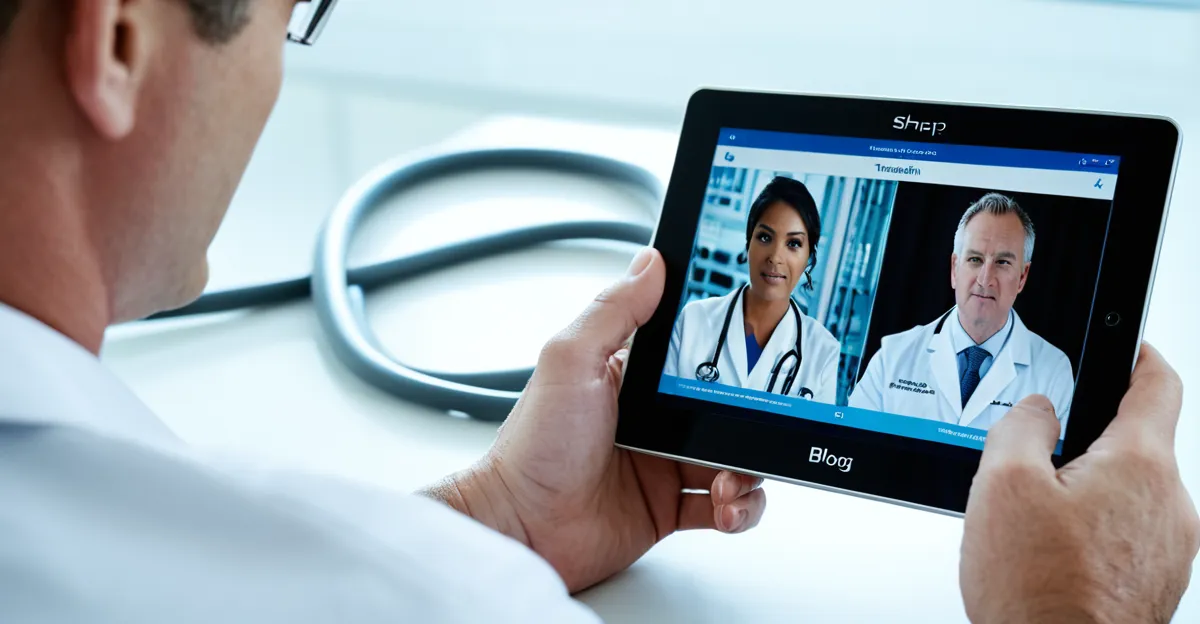Regulatory Bodies Overseeing Telehealth Quality
In the UK, regulatory bodies play a crucial role in ensuring the quality and safety of telehealth services. These organizations, including the Care Quality Commission (CQC) and the General Medical Council (GMC), are responsible for telehealth oversight to maintain service standards. Their roles and responsibilities include setting regulations, guidelines, and conducting routine inspections to assess compliance with established standards. This oversight is vital to protecting patient safety and maintaining trust in telehealth as a healthcare delivery method.
Recent updates to telehealth regulations have introduced stricter compliance requirements, reflecting an increasing focus on quality assurance. These changes aim to enhance the patient experience by ensuring that telehealth providers deliver effective and reliable services. Regulatory bodies are instrumental in these improvements, working tirelessly to align telehealth standards with evolving healthcare needs and technological advancements. As telehealth becomes an integral part of the healthcare system, the diligent oversight of these bodies remains essential.
Also read : How Can Lifestyle Changes Impact Your Overall Well-being?
## Guidelines and Standards for Telehealth Services
In the UK, the establishment of **telehealth guidelines** is paramount to maintaining high-quality virtual healthcare services. These guidelines are crafted carefully to ensure that **quality standards** are consistently met by all telehealth providers. The frameworks direct providers on how to deliver effective and patient-centric services.
### Detailed Description of Guidelines
The UK's telehealth guidelines emphasize patient safety, technological reliability, and clear communication channels. Providers must ensure that their technological platforms are secure and compliant with data protection laws. This includes maintaining confidentiality and patient data integrity. Guidelines also stress the importance of informed consent, requiring practitioners to fully explain procedures and obtain patient acknowledgment before proceeding.
### Quality Standards Adherence
Telehealth services are held to stringent **quality standards** akin to in-person healthcare. This includes having qualified practitioners available, using robust technologies, and providing accurate medical advice and timely care. Providers are expected to participate in continuous professional development to stay updated with advancements in telehealth capabilities.
### Best Practices for Compliance
To ensure adherence to these standards, providers should implement **best practices** such as regular staff training, routine system checks, and feedback mechanisms for patient experiences. Audits and self-assessments support ongoing compliance, helping providers align their services with evolving industry standards.
In summary, the well-structured guidelines and rigorous quality standards set in the UK ensure that telehealth services are delivered efficiently and safely, benefiting both patients and providers in the ever-evolving landscape of digital healthcare.
Evaluation Processes for Telehealth Services
Telehealth services in the UK undergo rigorous evaluation processes to ensure they meet high-quality standards. These processes rely on a variety of evaluation methods designed to assess service effectiveness and safety. Organizations conduct performance assessments to keep providers accountable and improve service delivery.
Importance of Performance Assessment
Performance assessment is a cornerstone of telehealth quality assurance. By measuring service effectiveness, these assessments highlight areas needing improvement. For instance, they evaluate how providers use technology, adhere to privacy laws, and maintain patient data security. Regular assessments ensure that services remain aligned with best practice guidelines.
Also to discover : What are the benefits of integrating technology in UK healthcare practices?
Case Studies of Evaluations
Evaluative case studies demonstrate the impact of thorough evaluations on telehealth improvement. A notable example involved a comprehensive telehealth review where gaps in service were identified. This led to targeted training sessions for staff and the implementation of upgraded system technologies, significantly enhancing patient satisfaction and care quality. These case studies underscore the value of meticulous performance scrutiny in maintaining excellence in telehealth services.
Government Initiatives to Enhance Telehealth Quality
To improve telehealth quality in the UK, the government has implemented several key initiatives. Recognizing the importance of public health policy, these efforts aim to foster a healthcare ecosystem that leverages digital solutions for enhanced patient outcomes.
Key Government Initiatives
Government initiatives focus on expanding digital infrastructure and training healthcare professionals. This includes funding projects to upgrade broadband connectivity in rural areas, ensuring that patients have reliable access to telehealth services. Another significant initiative is the allocation of resources for the development of secure, interoperable digital platforms, which facilitates seamless patient-practitioner interactions.
Impact of Public Health Policies
Changes in public health policy have streamlined the integration of telehealth into routine care. By setting clear regulatory frameworks, the government has increased the confidence of both providers and patients in virtual healthcare. These policies emphasize the need for secure data handling and patient confidentiality, assuring users of the safety and reliability of telehealth solutions.
Collaborative Efforts for Patient Outcomes
Collaboration between government bodies and telehealth providers is crucial in driving quality enhancement. These partnerships focus on innovation and sharing best practices to improve service delivery. Joint efforts have led to the creation of shared training programs and funding opportunities for research initiatives, directly benefiting patient care and supporting the telehealth infrastructure.
Incorporating technology into healthcare delivery not only modernizes the system but also addresses critical gaps in access and quality. Through consistent support and investment, governmental initiatives are shaping a robust telehealth environment where quality is paramount.
Recent Developments in Telehealth Regulations
Telehealth regulations in the UK have seen significant recent changes, reflecting the sector’s rapid evolution. These telehealth regulations are crucial to ensuring safe, effective, and equitable access to healthcare services.
Recent policy updates have strengthened compliance requirements for telehealth providers. These changes aim to bolster data security and privacy, aligning with the increased use of digital platforms in healthcare delivery. For healthcare providers, these updates necessitate a thorough review and possible overhaul of their current systems to ensure they meet new standards. This includes investing in more secure technology and adopting new practices that enhance privacy protections.
Telehealth regulations also anticipate the future needs of the healthcare landscape. Ongoing discussions suggest further adjustments could include increased focus on the integration of emerging technologies, such as artificial intelligence and machine learning, to improve patient diagnosis and care. This future-forward thinking is essential to adapting to technological advancements and maintaining high service quality.
Patients, too, are impacted by these changes. They gain enhanced protection against data breaches and can experience increased confidence in digital healthcare services, knowing they are subject to stringent evaluations and standards. The regulatory environment is adapting not only to current challenges but also preparing for the complexities of future healthcare delivery.








